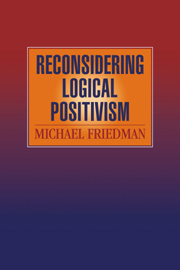6 - Epistemology in the Aufbau
Published online by Cambridge University Press: 05 June 2012
Summary
In Der logische Aujbau der Welt, Carnap inaugurates a new philosophical discipline he calls “constitutional theory [Konstitutionstheorie]” and presents a particular “constitutional system [Konstitutionssystem]” in which “[all] scientific concepts are reduced to the ‘given’” (§3). This particular constitutional system proceeds from an “autopsychological basis” in which “the choice of basic elements is limited to such psychological objects that belong to only one subject” (§63). More precisely, the basic elements consist of the conscious psychological objects or “experiences” of a single subject (§64). Constitutional theory also envisions other possible constitutional systems, however: notably, a constitutional system with “general-psychological basis” in which scientific concepts are reduced to the experiences of all subjects (§63), and a constitutional system with “physical basis” in which scientific concepts are reduced to the fundamental concepts of physics (§62). What is common to every such constitutional system, then, is just the circumstance that all scientific concepts are to be defined in a single system on the basis of a few fundamental concepts:
A constitutional system does not only have the task, like other conceptual systems, of classifying concepts in various types and investigating the differences and mutual relations of these types. Rather, concepts are to be step-wise derived or “constituted” from certain basic concepts, so that a genealogical tree of concepts results in which every concept finds its determinate place. That such a derivation of all concepts from a few basic concepts is possible is the main thesis of constitutional theory, through which it is distinguished from most other theories of objects [Gegendstandstheorien]. (§1)
Information
- Type
- Chapter
- Information
- Reconsidering Logical Positivism , pp. 114 - 162Publisher: Cambridge University PressPrint publication year: 1999
